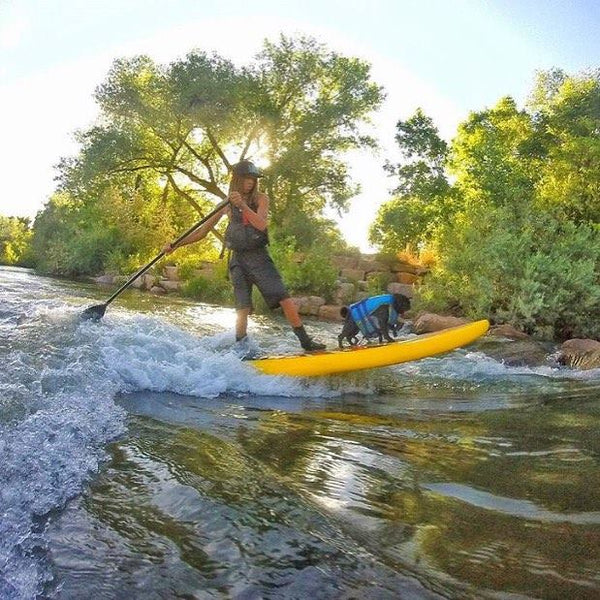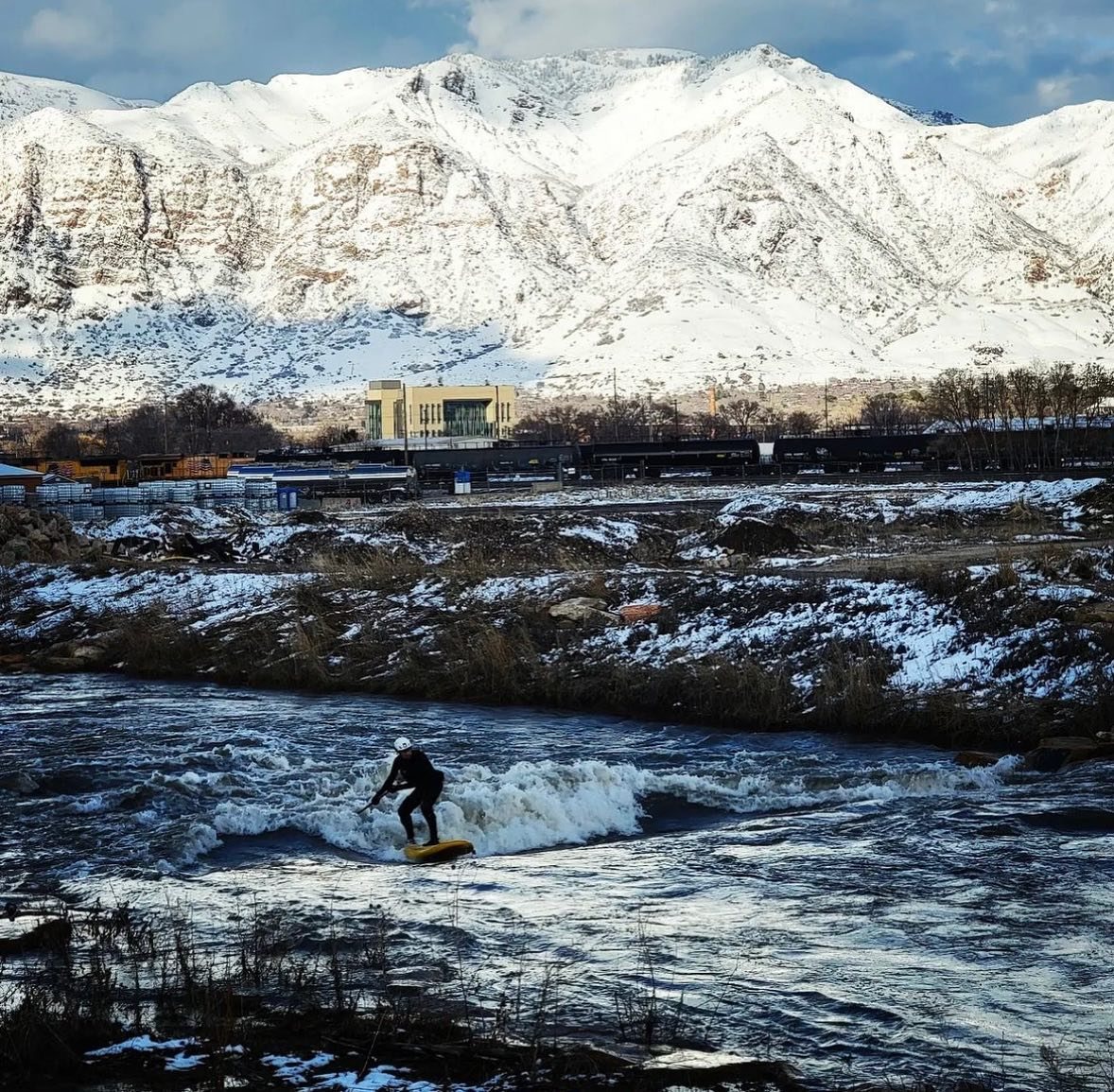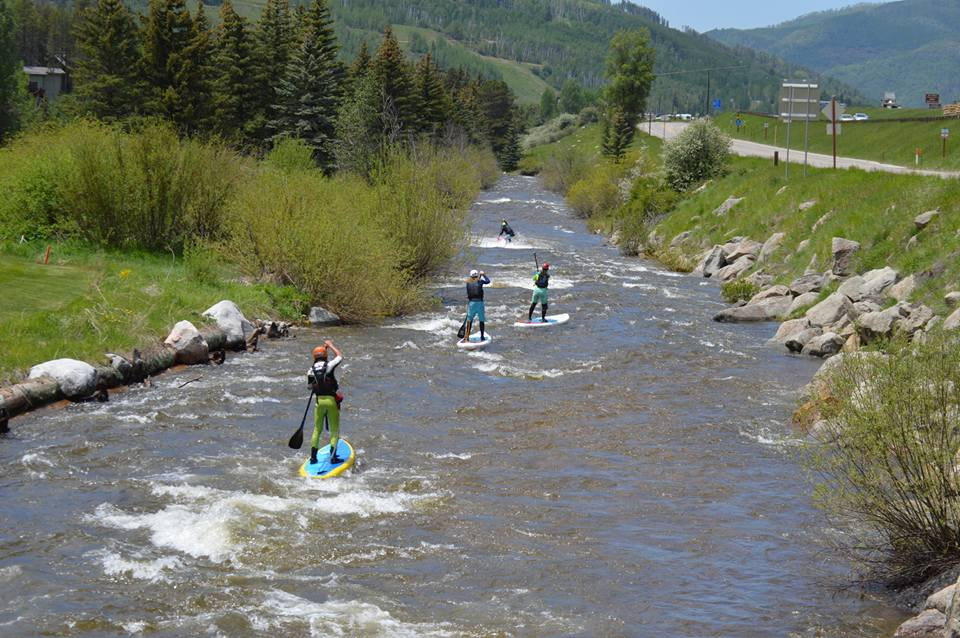
River Paddle Boarding: A Complete Guide for Every Paddler
Discover how to paddle board on rivers safely and confidently. Learn about gear, techniques, river dynamics, and safety tips in this comprehensive guide.
River paddle boarding is a thrilling way to combine adventure, fitness, and nature. This guide covers everything from choosing the right board and gear to reading currents, navigating obstacles, and staying safe on flowing water. Whether you’re new to SUP or ready to explore beyond lakes, this step-by-step resource will help you paddle rivers with confidence.
Table of contents
Why River Paddle Boarding Is Unique
Unlike calm lakes or bays, rivers are living, moving environments. The flow of water adds both excitement and challenge, requiring paddlers to adapt their technique and remain alert. From gentle, meandering streams to faster sections with rapids, every river demands respect and preparation. Done right, it’s one of the most rewarding ways to experience stand up paddle boarding.

The Right Equipment
Choosing Your Board
Your paddle board plays the biggest role in how you handle river conditions.
-
Inflatable paddle boards (iSUPs): Most river paddlers prefer them because they’re lightweight, portable, and highly durable. The military-grade PVC and cross-woven drop-stitch cores used in quality inflatables (like Glide’s boards) can handle collisions with rocks, logs, and shallow beds without cracking.
-
Specialized river SUPs: Some boards are built specifically for rivers, with features like an upturned nose (rocker) for maneuverability and removable fins for shallow or rocky areas.
-
Hard boards: While they perform well on flat water, they’re more vulnerable to damage in rocky rivers and harder to transport.
👉 For most paddlers, a durable inflatable SUP is the best river choice.
Essential Gear and Accessories
River conditions demand extra preparation. Pack these essentials:
-
Adjustable paddle – Allows you to shorten or lengthen depending on conditions.
-
Manual or electric pump – If using an inflatable SUP.
-
Repair kit – Small punctures can happen; better to be prepared.
-
Helmet – Protects against rocks and branches in fast water.
-
PFD (Personal Flotation Device): Coast Guard–approved and always worn.
-
Quick-release leash: A must on rivers. It keeps your board close but allows instant detachment if tangled in current or debris.
-
Dry bag or waterproof backpack: Keeps essentials like snacks, phone, and first aid secure.
-
Traction pad: Improves grip and stability, especially in turbulent water.
-
Bungee cords: To secure gear on deck.
Understanding River Dynamics
River Features
Every river has its own rhythm. Some key features to recognize:
-
Currents: The main flow of water, which may vary in speed.
-
Eddies: Circular currents behind rocks or bends where water is calmer — perfect resting spots.
-
Obstacles: Submerged rocks, branches, sandbars, and human-made structures.
Reading the River
River reading is an essential skill:
-
Look at surface patterns: Swirls, ripples, or discoloration often indicate rocks or depth changes.
-
Observe floating debris: It shows flow direction and speed.
-
Scout new rivers: Walk the banks or talk to locals before paddling unfamiliar sections.
Adjusting to the Current
Currents are your biggest challenge:
-
Paddling upstream: Requires more effort. Use short, powerful strokes and stay near the riverbank where flow is weaker.
-
Paddling downstream: The current helps, but you must stay alert and steer constantly. Step-back turns and sweeping strokes are useful for maneuvering.
-
Avoid being sideways to current: Always keep your board facing upstream or downstream to reduce the risk of capsizing.
Dealing With Obstructions
Rivers constantly change, especially after storms. Watch for:
-
Submerged rocks
-
Fallen trees (“strainers”)
-
Low bridges or man-made barriers
If you can’t steer around an obstacle:
-
Drop to your knees or sit for stability.
-
Paddle with your hands if needed.
-
Dismount and walk your board around dangerous areas.
Techniques for River Paddle Boarding
Start Small
Begin on calm stretches before tackling stronger currents. Gain confidence by practicing:
-
Kneeling starts: More stability while learning.
-
Quick turns: Use sweeping strokes or step-back pivots.
-
Balance drills: Practice bracing with your paddle to recover when pushed off-balance.
Use the River to Your Advantage
-
Rest in eddies to conserve energy.
-
Follow current “tongues” (smooth, fast sections) for easier downstream travel.
-
Cross currents at an angle rather than head-on.

Safety Tips for River SUP
-
Always wear a PFD and helmet in moving water.
-
Quick-release leash only: Regular ankle leashes can be dangerous if snagged.
-
Don’t paddle alone: Go with friends and let someone on shore know your plan.
-
Know your limits: Avoid fast rapids until you’ve built the necessary skills.
-
Check conditions: Water levels, flow rates, and weather can change quickly.
Eco-Friendly River Paddling
Rivers are delicate ecosystems. Paddle responsibly by:
-
Launching from durable areas (sand, gravel, docks).
-
Packing out all trash — even food scraps.
-
Respecting wildlife by keeping a safe distance.
-
Avoiding spawning beds or nesting areas.
FAQs About River Paddle Boarding
Is river paddle boarding safe for beginners?
Yes — but beginners should start on calm, slow-moving rivers. Stick to sections without rapids, wear a PFD and helmet, and go with experienced paddlers until you’re comfortable.
What kind of paddle board is best for rivers?
Inflatable paddle boards are usually the best choice for rivers. They’re lightweight, durable, and forgiving when bumping into rocks. Look for models with multiple fin options and reinforced construction.
Do I need a helmet for river paddle boarding?
If you’re paddling in moving water or anywhere with rocks and debris, a helmet is strongly recommended. It provides crucial protection against head injuries.
Can I paddle board upstream on a river?
Yes, but it requires strength and efficient technique. Stay close to the shoreline where the current is weaker, and use short, powerful strokes to make progress.
What safety equipment should I always carry?
At a minimum: a Coast Guard–approved PFD, quick-release leash, helmet (for rivers with obstacles), and a whistle. A repair kit and waterproof dry bag are also smart to bring.
Are all rivers suitable for paddle boarding?
No. Some rivers are too shallow, rocky, or fast-moving for safe SUP use. Always research the section you plan to paddle, check water levels, and avoid dangerous rapids until you have advanced skills.
Final Thoughts: Adventure Awaits
Paddle boarding on rivers combines adrenaline, skill, and connection with nature. With the right equipment, knowledge of river dynamics, and a strong commitment to safety, you can explore flowing water with confidence. Start with easy runs, build your skills, and soon you’ll be gliding through eddies, cruising downstream, and discovering hidden stretches of water that few people experience.
River SUP is more than a workout — it’s an adventure that rewards every paddler willing to take on the current.
👉 Ready to try it? Explore Glide’s lineup of ultra-durable inflatable paddle boards designed to handle rivers and beyond.
FAQs About River Paddle Boarding
Is river paddle boarding safe for beginners?
Yes — but beginners should start on calm, slow-moving rivers. Stick to sections without rapids, wear a PFD and helmet, and go with experienced paddlers until you’re comfortable.
What kind of paddle board is best for rivers?
Inflatable paddle boards are usually the best choice for rivers. They’re lightweight, durable, and forgiving when bumping into rocks. Look for models with multiple fin options and reinforced construction.
Do I need a helmet for river paddle boarding?
If you’re paddling in moving water or anywhere with rocks and debris, a helmet is strongly recommended. It provides crucial protection against head injuries.
Can I paddle board upstream on a river?
Yes, but it requires strength and efficient technique. Stay close to the shoreline where the current is weaker, and use short, powerful strokes to make progress.
What safety equipment should I always carry?
At a minimum: a Coast Guard–approved PFD, quick-release leash, helmet (for rivers with obstacles), and a whistle. A repair kit and waterproof dry bag are also smart to bring.
Are all rivers suitable for paddle boarding?
No. Some rivers are too shallow, rocky, or fast-moving for safe SUP use. Always research the section you plan to paddle, check water levels, and avoid dangerous rapids until you have advanced skills.






